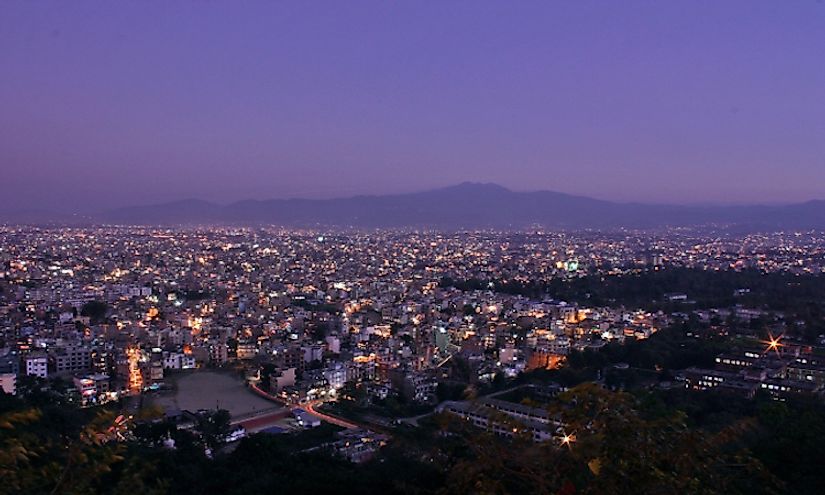What Is The Capital Of Nepal?

What Is The Capital Of Nepal?
The capital city of Nepal is Kathmandu, and it is also the largest city in the country, it is located in the World Heritage Site Kathmandu Valley. Kathmandu history which is inseparable from that of the Kathmandu valley dates back to the ancient time. Archaeological explorations have indicated that the town was traced to the period between 167 BC and 1 AD, with the oldest findings being the statue in Maligaon that was dating back to 185 AD. Kathmandu lies in a hilly region near the confluence of Baghmati and Vishnumati River. Kathmandu is standing at 1400 meters above sea level in the bowl-shaped Kathmandu Valley of central Nepal.
The History Of The Capital City Of Nepal
Kathmandu was founded in the year 723 by Raja Gunakamadeva. The city was under the Malla Dynasty from the 12th to the 17th Century and fell under the Gurkha Kingdom in 1768. In the recent years, Kathmandu has experienced conflict in political instability and brought rise to violence and protests which have often brought considerable damage to buildings or leading to loss of lives. For example in 2004 a mob of around 4000 people expressed their anger at the killing of 12 Nepalese job seekers in Iraq and burned dozens of buildings including the city’s Masjid Mosque. In 2008, Kathmandu was all over in the headlines when political protests relent and political protests have plagued the city ever since.
Role Of The Capital City Of Nepal
Nepal is among the poorest nations in the world and the least developed with almost a 1/3 of the population living below the poverty level. In Nepal, Agriculture is the backbone of the economy in the country providing a livelihood for 3/4 of the population and accounting around 38% of the country’s GDP. Kathmandu also harbors most of the government offices, foreign organizations, embassies, banks. The city is also the headquarters of the South Asian Association for Regional Cooperation (SAARC). Kathmandu has become Nepal’s most significant business center, and in the 1970’s, there were major expansions of the transport systems which included construction of new roads and air services that made the city the hub of National transportation system. Tribhuvan International Airport is located a few kilometers from the city center, offer both local and international flights. The city exports handicrafts, artworks, and papers among others. Besides, tourism is one of the primary incomes earning activity in the city.
Demographics of The Capital City Of Nepal
Kathmandu has various cultural groups, ethnicities, languages, religions, and races. Newar is the largest ethnic group comprising 30% of the population, followed by Mtawali at 25%, the Khas Brahmins at 20%, and the Chettris at 18.5% of the population. Many of the ancient settlements in Kathmandu have specific street festivals, and they follow astronomical observations. A good example is the Makar Sankranti, a festival that is based on the solar calendar. People celebrate by swimming in the Ganges River or other rivers during this festival. The city had a population of about 985,000 in 2015. The city has a population density of 20,288 people per square kilometer. Kathmandu accounts for 1/12 of the total population in Nepal.
Future Prospects Of The Capital City Of Nepal
As the capital city of Nepal, Kathmandu faces the same challenges that the country faces. Security concerns relating to the Maoist conflict have led to a decrease in tourism which is the leading source of income in the country. The small economy, technological backwardness, susceptibility to natural disaster and the landlocked geographic location may hinder the fast growth of the city as well as the country.







